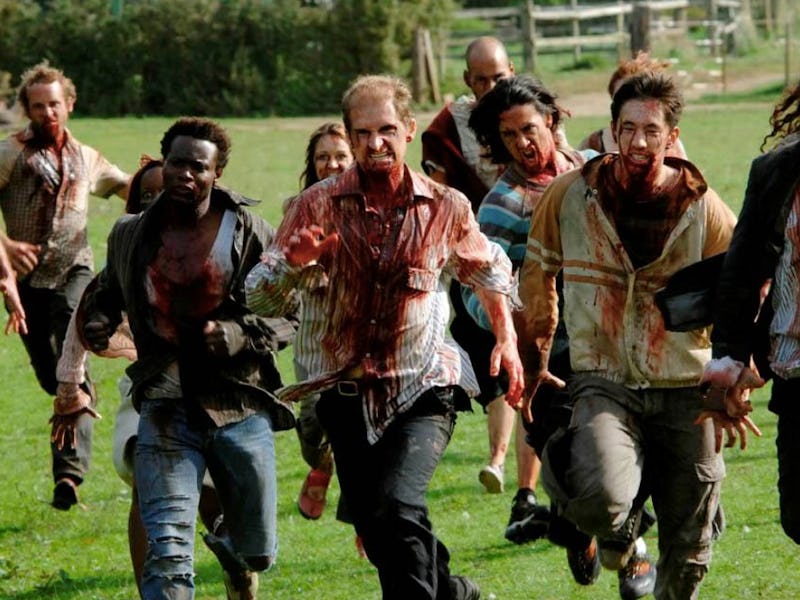The Best Zombie Movie of the Century Broke Every Rule — It Paid Off
“If you said to a really good actor, ‘Would you come and do this zombie film?’ they’d say, ‘What? You’ve got to be joking, I’m not doing a zombie film.’”

The early 2000s were a very different time in Hollywood. Coming off 1999, considered a high point by many for smart, edgy blockbusters (The Matrix, Magnolia, Fight Club — to name a few), the movie industry at the beginning of our current millennium wasn’t as friendly to superheroes and sci-f monsters as it is now. That would change in a few short years, but before it did, one influential director stepped in to change everything.
In 2003, Danny Boyle was best known for making dark comedies and dramas like Trainspotting. Then came 28 Days Later. Based on a script by Alex Garland (Annihilation, Ex Machina), the movie defied pretty much every rule of Hollywood to make a bunch of money and supercharge the zombie genre.
Speaking to Inverse for a recent oral history of 28 Days Later, Garland, Boyle, and many others revealed how they pulled off the impossible — starting with an unlikely concept...
Cillian Murphy in 28 Days Later.
Before making 28 Days Later, neither Boyle nor Garland was particularly interested in zombies. Garland credits the Resident Evil games with reigniting his childhood passion for the undead, which led to him writing a script, but it wasn’t until Boyle found a way to put his own stamp on the genre that the idea really took off.
“What Danny brought to that was a very Danny spin, which was a concept,” Garland says. “The thing he was really interested in was rage.”
From there, Boyle says they explored rage in all its facets, from “road rage” to “social intolerance,” but the movie’s unique spin on its “infected” (28 Days Later never actually calls them “zombies”) came from a more basic form of rage: “we found all these photographs of the medical stages of rabies. We replicated that in the look of people.”
Garland (left) and Boyle in 2003.
Even with a strong idea, Boyle still had his work cut out for him. For one thing, convincing any serious actors to make a zombie movie was a lot more difficult back in the early 2000s.
“If you said to a really good actor, ‘Would you come and do this zombie film?’ they’d say, ‘What? You’ve got to be joking, I’m not doing a zombie film,’” Boyle says.
However, the director used that to his advantage, casting a mix of unknowns and a few smaller stars (including a young Cillian Murphy in his first major role).
“These kinds of films benefit from people who are not superstars so that you have that immediate sense that everybody’s dispensable,” Boyle adds.
Brendan Gleeson, Murphy, and Naomie Harris.
28 Days Later’s distinct look is also thanks to the filmmaker’s refusal to play by the rules. The movie was shot with digital consumer cameras (the Canon XL H1 or something,” cinematographer Anthony Dod Mantle tells Inverse). The image quality was inferior to Hollywood cameras, but the “frantic” digital shutter matches the film’s frenetic energy.
“You could create this demonic atmosphere,” Mantle says.
And then there’s the movie’s unforgettable opening scene in a deserted London. After waking up from a coma that allowed him to skip the apocalypse, Murphy’s protagonist wanders the streets looking for another human. At one point, he finds himself on Downing Street, where the British prime minister resides, only to spot an overturned double-decker bus. But even that iconic moment required a bit of rule-breaking.
“We had got the Westminster Council to agree for us to lay a bus on its side and smash the windows,” line producer Robert How recalls. “We wanted to put it outside Downing Street and they said, ‘No, you’ve got to put it further up the road.’ We got there at 4 in the morning and there wasn’t anybody from the council there so we put it outside Downing Street anyway.”
In these ways (and many more), 28 Days Later took a punk-rock approach to the zombie movie. And as a result, the genre got the shot in the arm it had needed for a long, long time.